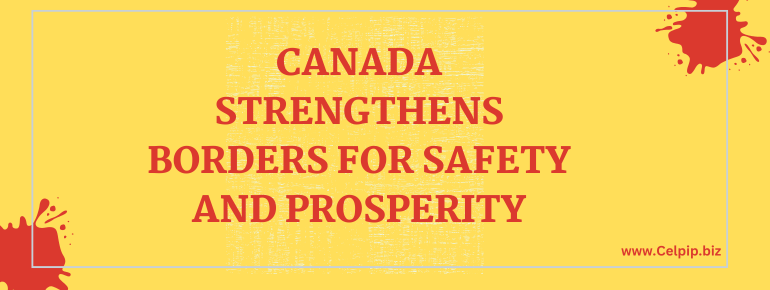You might find that the program you first chose as an international student in Canada doesn’t fit your academic interests or long-term career goals anymore. This happens a lot. A lot of students change programs or even colleges when they find better opportunities, better job prospects, or just a stronger interest in another field.
It’s important to know how the process works, how it will affect your study permit, and what it means for your Post-Graduation Work Permit (PGWP) before you make any changes. The guide below makes everything clear so you can make smart choices.
How to Switch Colleges or Programs in Canada
There are a few important steps to take if you want to change your course or college. Following the right steps will help you stay in line with immigration rules.
1. Look into the new college or program
Start by doing a lot of research on the new program or school you’re interested in. Think about the program’s length, reputation, tuition costs, job prospects after graduation, and the curriculum.
Most importantly, make sure that the new school is a Designated Learning Institution (DLI). Your study permit will only be valid if you stay enrolled in a DLI.
2. Look at the requirements for transferring
Each college and university in Canada has its own rules about transferring. Check their eligibility requirements, the documents you need to submit, the English language requirements, and the rules for transferring credits.
To be sure of the exact steps, get in touch with the admissions office of the new school.
3. Submit an application for the new program
After you pick your new program, send in your application and any other documents that are needed, like transcripts and proof of previous education.
If the new school accepts you, they will send you an offer letter that you will need for the next steps.
4. Tell Your Current School
If you are changing programs at the same school, let the administration know and make a formal request for the change.
If you are moving to a new school, let your current school know that you are leaving. Make sure to plan ahead because some schools have deadlines or rules about dropping out.
5. If you’re changing colleges, let IRCC know about your DLI.
If you change colleges, you need to let Immigration, Refugees, and Citizenship Canada (IRCC) know.
To update your DLI number to the new school, log in to your IRCC account.
Not telling IRCC could change the status of your study permit.
6. Get the New Acceptance Letter
If you are moving to a different school, you need to send your study permit records to the new school.
7. Apply for credit transfers
You may be able to get transfer credits if your new program is similar to your old one.
Call both your old and new schools to find out how many credits you can transfer.
8. Think about changes in your finances
The cost of tuition is different at different colleges, cities, and provinces.
Check your finances carefully and change your budget if you need to, especially if you’re moving to a city where living costs more.
How it will affect your Visa and PGWP
Your study permit and Post-Graduation Work Permit (PGWP) may be affected if you switch programs or schools. It is very important to understand what these things mean.
How long is the study permit good for?
Your study permit is only good as long as you are a student at a Designated Learning Institution.
Always let IRCC know when you change schools so they can update your DLI number.
If you don’t do this, your study permit might not be valid.
What it means for PGWP eligibility
To be eligible for PGWP, you must have finished your studies at a DLI, the length of the program, and the type of school.
Changing your program could change your PGWP in these ways:
If you switch to a shorter program, your PGWP time may be shorter.
You might not be able to get a PGWP if you switch to a program that doesn’t qualify.
You may not be eligible if you have big gaps in your studies.
Before switching, make sure your new program always meets PGWP requirements.
Extension of Visa
You might need to extend your study permit if your new program is longer than your old one.
You should apply at least 30 days before your current permit runs out.
Conditions for a Study Permit
Some study permits have certain requirements that depend on your original program.
You might need a new study permit if your new program doesn’t meet those requirements.
When Should You Change Programs?
There are many good reasons to change colleges or programs. Here are some common situations:
Not Interested
If your current program isn’t helping you reach your academic or career goals, switching may help you do better in school and at work.
Hard Time in School
If you’re having a lot of trouble, switching to a program that fits your strengths better might help you do better.
More Job Options
A lot of students change their majors to ones that will help them get jobs, like IT, engineering, health sciences, or business.
For personal or health reasons
If personal issues are making your current program hard, it might be helpful to switch to a program that is less demanding or more flexible.
Better Facilities or Reputation
Some students switch to schools that have better facilities, are higher up in the rankings, or offer better support for international students.
Last Thoughts
As an international student in Canada, you can change your program, but you need to plan it out carefully.
Make sure that the new program fits with your academic goals, won’t hurt your chances of getting a visa or PGWP, and is offered by a DLI.
To avoid any legal or academic problems, stay in touch with both your current and future schools and IRCC.
1. After getting a Canadian student visa, can I change my course?
Yes. You can change programs after getting your visa, but only if the new program is offered by a DLI and you let IRCC know if you need to.
2. Is it possible for international students in Canada to switch courses?
Yes, international students can switch their course or program as long as they follow the right steps and meet immigration requirements.
3. Is it possible to switch programs after being accepted?
Yes, but you have to meet the new program’s academic and administrative requirements. Let IRCC know if you are changing schools.
4. Is it easy to change programs in Canada?
It depends on how available it is, what the admission requirements are, and what the immigration rules are. Some people find the process easy, while others find it harder.
5. As an international student, can I change my course?
Yes. To keep your study permit valid, you must stay enrolled in a DLI and follow IRCC rules.
6. Is it possible to change classes after the first semester?
Yes, a lot of students do. If you need to, just make sure to check with your school and update your study permit information.




